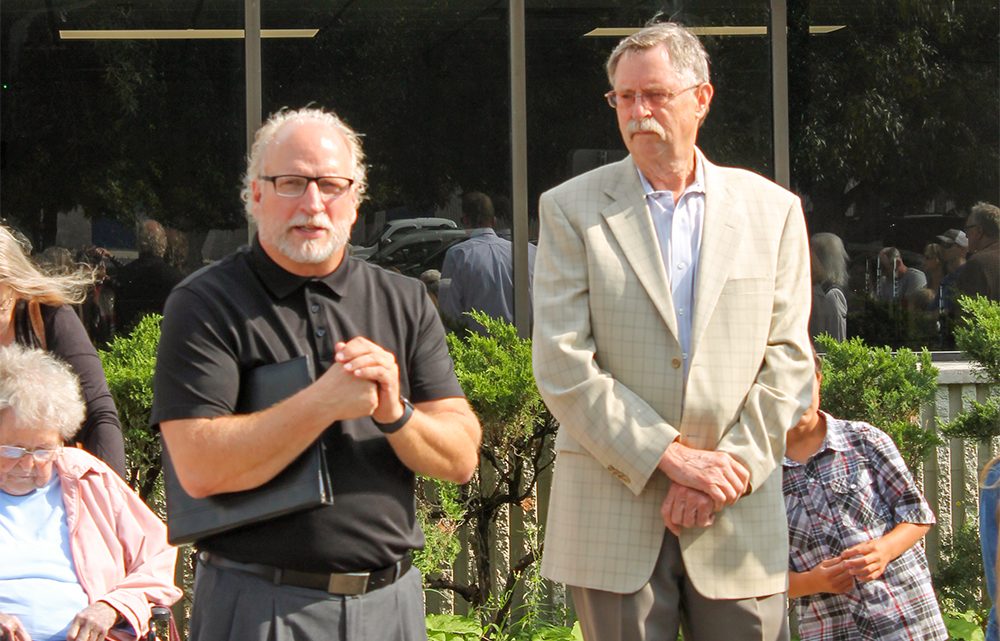Dr. Dale Anderson and his wife Janet have been involved with the Rapid City School in South Dakota for 35 years. “Our boys went to the small two-room school years ago,” he explains.
Anderson said the original property was donated for a school because the land couldn’t be used for anything else. But he felt it wasn’t adequate for a school as there was no room for a gymnasium where the children could play during South Dakota’s cold winters, and the school was hidden from view.
“Three years ago, I found out the school was at capacity and had a waiting list,” says Anderson. “I thought, We can’t leave that situation unanswered.” He decided another location had to be found. He began searching with Kief Hansen, a realtor from the local church.
Zoning challenges
A recent congressional ruling forced the Black Hills Workshop to sell several of their properties because they had trained and employed many mentally challenged individuals in one location, and that plan was no longer legal. Dr. Anderson decided that one of these properties would work, so he purchased it.
In addition to Anderson’s medical practice, he has been ranching for a while. After 48 years of medical work he wanted to downsize and decided to sell one of his ranches. He used that money to buy the property and refurbish the building into a school, which he then donated to the Dakota Conference. There is room for a gym, another area for classrooms, and a lunchroom. There is space for a church as well.
Anderson was certain the city would allow the new use of the building, as there is a preschool across the street. According to the Zoning and Planning Committee, however, the answer was, “No, as it is zoned industrial and schools are not allowed in industrial areas.”
Zoning Committee members were given a tour of the building, but the vote was six to two—against Anderson and his request for a school. An observer came to him and advised he should appeal to the city council.
The city council approved the plan and overrode the Zoning and Planning Committee. “It has been fortuitous, and I believe there was divine intervention in obtaining our goals,” says Anderson. It took longer than they planned with unexpected delays, and cost more than anticipated as a professional had to be hired to negotiate with the city council, but it has worked out.
The teachers and kids are excited about their new school. There are classrooms with interactive smart boards, a new lunchroom, and a gymnasium area. “I would love to see four classrooms with 20 students in each classroom,” says Anderson. “I am proud of the school and the way it looks. It will impress people in the community, and the new location is more visible than the previous one.”
At the time of this interview a fence was being erected and sod and cedar chips were being laid for playground equipment. “Kids are the best investments,” says Anderson. “The gray hairs and bald heads fade away, but the kids have so much potential for the future. Students stand outside and look at the facility and are proud of their school. They love to run and play in the gym they never had before.”
The pride of potential
Rapid City has a growing population and there is a new housing project with more than 500 homes near the school. There is potential for growth with the good visibility as well.
Even the contractor who installed the school’s bell tower asked to use photos of the school as part of his company’s advertising. The school’s bell tower has a functioning bell to announce the start of school each day.
“Everyone feels energized and excited to make the facility better than it was,” says Anderson. “Members paint, power wash the sidewalk, mow the lawn and clean the cupboards to improve the appearance of the new school. I tell my wife, ‘When I wash the car, it tends to run better.’ When the school looks neat and well kept, everyone is proud and more willing to help.”
The church portion of the facility is yet to be finished. “There is a lot of potential for growth for the church,” says Anderson. “We have many families with young children and those children belong in the school. We now have an inviting school with the capacity to accept more. That is what excites me.”








